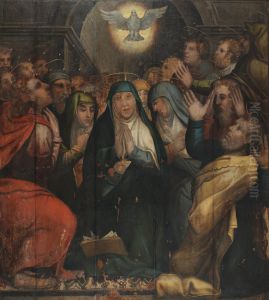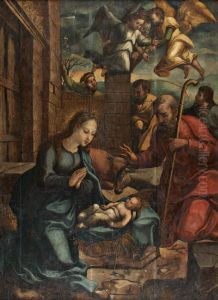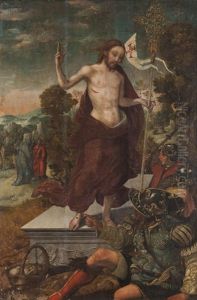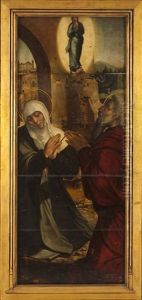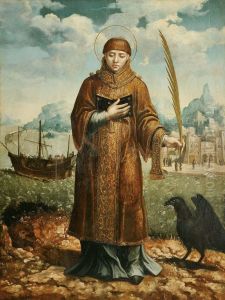Diogo De Contreiras Paintings
Diogo de Contreiras was a Portuguese Renaissance painter whose life and work were centered in the 16th century. While the exact dates of his birth and death are not precisely known, it is generally believed that he was born around 1510 and died around 1580. He was part of the Portuguese painting scene at a time when the country was experiencing significant economic and cultural growth due to its maritime explorations and trade.
Contreiras is associated with the Manueline and Renaissance styles that were prevalent in Portugal during his lifetime. His works often reflected the religious and cultural values of his era, with a focus on Christian religious themes. Despite the scarcity of extensive documentation on his life, Contreiras is recognized for his contribution to the Portuguese Renaissance and his influence on the artistic movements of the period.
The body of work attributed to Diogo de Contreiras includes altarpieces and other religious paintings, which were primarily commissioned for churches and monasteries. His style is characterized by detailed representation, vibrant color palettes, and an adherence to the iconography of the time. However, due to the lack of signed and dated works, attributions of specific paintings to Contreiras can sometimes be speculative, and art historians have had to rely on stylistic analysis and historical context to attribute works to him.
One of his most noted works is the altarpiece in the Church of São João Baptista in the town of Tomar, Portugal. This work showcases his skill in composition and his ability to convey the religious sentiment of the period. The altarpiece is a prime example of the hybridization of Gothic and Renaissance elements typical of Portuguese art in the 16th century.
Despite not being as widely known as some of his contemporaries, Diogo de Contreiras remains an important figure in the study of Portuguese Renaissance art. His paintings are part of the cultural heritage of Portugal and provide insight into the aesthetic and devotional practices of the time.
